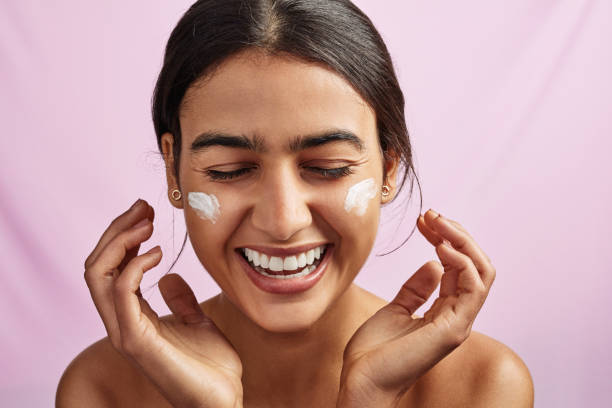Skincare 101
The Basics of Healthy, Glowing Skin
Taking care of your skin is essential for maintaining a healthy, radiant complexion. Whether you’re a skincare beginner or looking to enhance your routine, understanding the basics is key to achieving great results. In this guide, we’ll cover the essentials of skincare, explain common ingredients, and provide tips on how to build an effective regimen for your skin type.
1. Understand Your Skin Type
Before building a skincare routine, it’s important to know your skin type. Different skin types require different kinds of care and products. The main skin types are:
- Normal Skin: Balanced skin that isn’t too oily or too dry. It’s not prone to sensitivity or breakouts.
- Oily Skin: Characterized by excess sebum (oil) production, which can lead to shiny skin and clogged pores.
- Dry Skin: Lacks moisture and can feel tight, flaky, or rough. It may also be more prone to irritation.
- Combination Skin: A mix of oily and dry areas, typically with an oily T-zone (forehead, nose, chin) and dry cheeks.
- Sensitive Skin: Easily irritated by products, environmental factors, or even stress, resulting in redness, itching, or breakouts.

2. Essential Steps in a Skincare Routine
A basic skincare routine should focus on cleansing, moisturizing, and protecting your skin. You can customize your routine with additional products like serums and exfoliants depending on your skin’s needs. Here’s a simple breakdown:
Morning Routine
- Step 1: Cleanser
Start by washing your face with a gentle cleanser that suits your skin type. This removes dirt, oil, and impurities that build up overnight. - Step 2: Toner (Optional)
A toner helps balance your skin’s pH levels and prepares it for the next steps. It can also add hydration or target specific concerns like pores or oiliness. - Step 3: Serum
Serums contain concentrated active ingredients like Vitamin C, hyaluronic acid, or niacinamide that target specific issues, such as dullness, fine lines, or uneven skin tone. - Step 4: Moisturizer
Hydrate your skin with a moisturizer appropriate for your skin type. Oily skin types should opt for lightweight, non-comedogenic formulas, while dry skin benefits from thicker, more nourishing creams. - Step 5: Sunscreen
Sunscreen is the most important step in protecting your skin from sun damage, premature aging, and skin cancer. Use a broad-spectrum SPF of at least 30 daily, even on cloudy days.
Evening Routine
- Step 1: Cleanser
Cleanse your face to remove makeup, dirt, and excess oil that accumulated throughout the day. - Step 2: Exfoliant (2-3 times a week)
Exfoliating helps remove dead skin cells, promoting cell turnover and leaving your skin smoother and brighter. Choose between physical exfoliants (scrubs) or chemical exfoliants like AHAs (alpha-hydroxy acids) and BHAs (beta-hydroxy acids) for deeper cleansing. - Step 3: Treatment/Serum
At night, your skin repairs itself, so this is the perfect time to use treatments like retinol, peptides, or acne treatments that promote healing and renewal. - Step 4: Moisturizer
Apply a nourishing night cream to lock in hydration and repair your skin overnight.
3. Key Skincare Ingredients to Know
Understanding common skincare ingredients can help you choose the right products for your needs:
- Hyaluronic Acid: A powerful humectant that attracts and retains moisture, making it ideal for hydration and plumping.
- Vitamin C: An antioxidant that brightens the skin and fades dark spots while protecting against environmental damage.
- Retinol: A Vitamin A derivative that boosts collagen production, improves skin texture, and reduces the appearance of fine lines and wrinkles.
- Salicylic Acid: A beta-hydroxy acid (BHA) that exfoliates the skin and helps to clear clogged pores, making it great for acne-prone skin.
- Niacinamide: A form of Vitamin B3 that helps reduce redness, minimize pores, and strengthen the skin’s barrier.
- Glycolic Acid: An alpha-hydroxy acid (AHA) that exfoliates dead skin cells and improves skin tone and texture.
- Ceramides: Lipids that help restore the skin’s barrier, locking in moisture and protecting against environmental irritants.
4. How to Build a Personalized Skincare Routine
To create an effective skincare routine, start by identifying your skin’s specific concerns and selecting products that target those issues. Here are some common concerns and product recommendations:
- For Acne-Prone Skin:
Use a salicylic acid-based cleanser, an oil-free moisturizer, and spot treatments containing benzoyl peroxide or tea tree oil. Regular exfoliation with AHAs or BHAs will help keep pores clear. - For Dry Skin:
Focus on hydrating ingredients like hyaluronic acid, ceramides, and glycerin. Avoid harsh exfoliants and use rich, creamy moisturizers that help lock in moisture. - For Anti-Aging:
Incorporate retinol or peptides to boost collagen production. Vitamin C serums can help brighten and reduce the appearance of fine lines. Always use sunscreen to protect against UV damage. - For Sensitive Skin:
Choose fragrance-free, hypoallergenic products with soothing ingredients like aloe vera, chamomile, and ceramides. Avoid alcohol-based toners and harsh exfoliants.
5. Skincare Tips for Glowing Skin
- Consistency is Key: Stick to your routine and give products time to work. It can take several weeks to see noticeable results.
- Patch Test New Products: To avoid irritation, test new products on a small area of your skin before applying them to your face.
- Don’t Overdo It: Over-exfoliating or using too many active ingredients can harm your skin barrier. Keep your routine simple and build gradually.
- Hydrate and Eat Well: Healthy skin starts from within. Drink plenty of water and eat a balanced diet rich in vitamins and antioxidants.
- Get Enough Sleep: Sleep allows your skin to repair and regenerate, leading to a fresher, more youthful complexion.

Conclusion
Achieving healthy, glowing skin doesn’t have to be complicated. By understanding your skin type, using the right products, and sticking to a consistent routine, you can nurture your skin and improve its overall appearance. Whether you’re just getting started or refining your routine, following these Skincare 101 basics will help you take the first steps toward better skin.